Smart Education on the Rise in Southeast Asia: New Opportunities for Education Tablets
![]() 2025-11-04
2025-11-04
![]() Hopestar
Hopestar
Introduction
Across Southeast Asia, education is undergoing a profound digital transformation. The post-pandemic shift toward hybrid and online learning has accelerated investment in digital classrooms, cloud-based learning platforms, and mobile devices. Governments, private schools, and education technology (EdTech) startups are joining forces to create a new era of smart education that is accessible, interactive, and personalized.
At the heart of this evolution lies the education tablet—a compact, affordable, and highly adaptable learning tool that connects students, teachers, and digital content in ways that traditional hardware cannot. As the region’s education landscape modernizes, tablets are becoming an essential part of the smart classroom ecosystem.
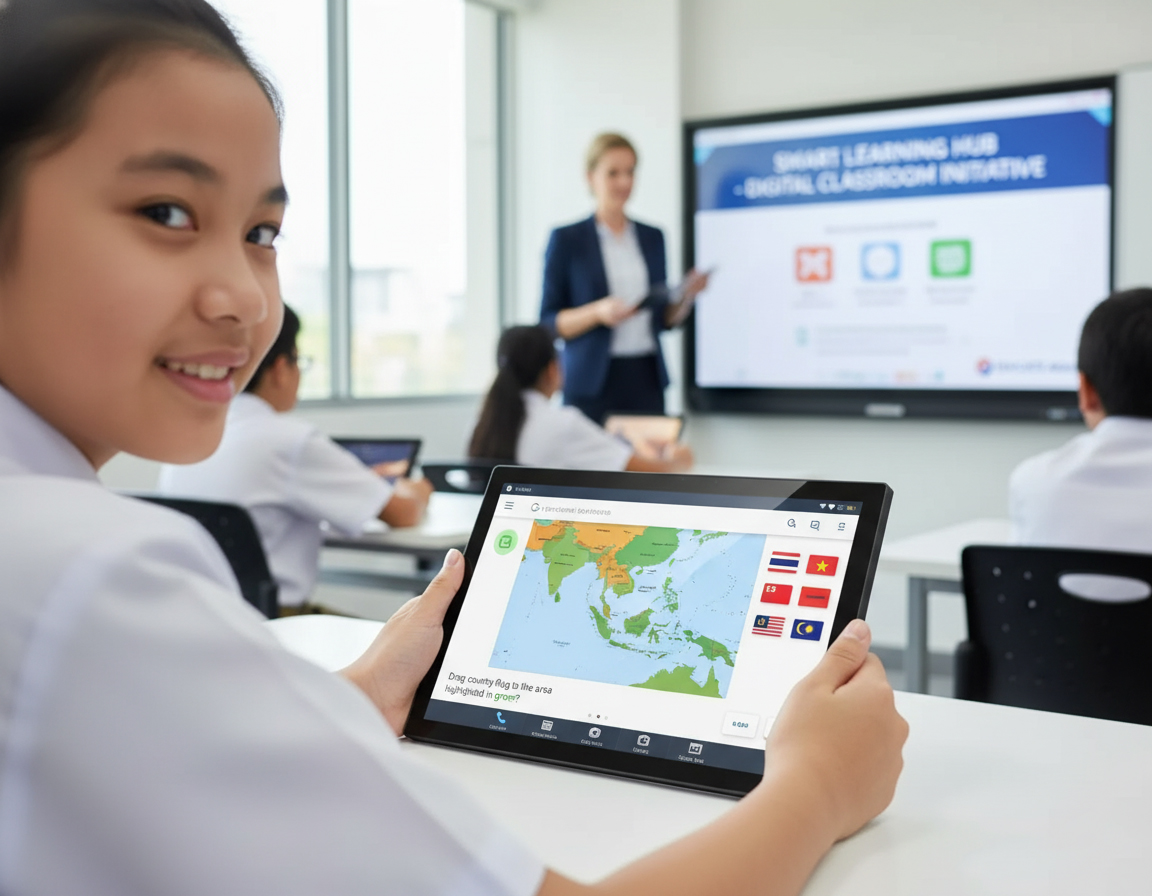
Section 1: The Acceleration of Digital Education in Southeast Asia
The Southeast Asian region—including Indonesia, Thailand, Vietnam, the Philippines, and Malaysia—is witnessing unprecedented momentum in education technology adoption. Governments across these countries are implementing national digital learning strategies to bridge education gaps and prepare the next generation for a digital economy.
Indonesia has launched national distance learning programs to reach rural and island communities, emphasizing affordable device access.
Thailand’s Smart Classroom initiative integrates tablets, interactive displays, and cloud-based teaching tools into public schools.
Vietnam and the Philippines are investing in digital campus infrastructure to enhance remote learning capabilities.
Malaysia continues to strengthen its EdTech ecosystem through partnerships between local startups and government agencies.
According to market research, the Southeast Asia EdTech sector is expected to maintain double-digit growth, with education hardware—especially tablets—forming the foundation of this expansion. As schools adopt cloud-based management systems and digital curricula, demand for reliable, scalable device solutions continues to rise. Tablets, alongside interactive panels and digital learning terminals, are increasingly seen as the most cost-efficient and student-friendly options for digital classrooms.
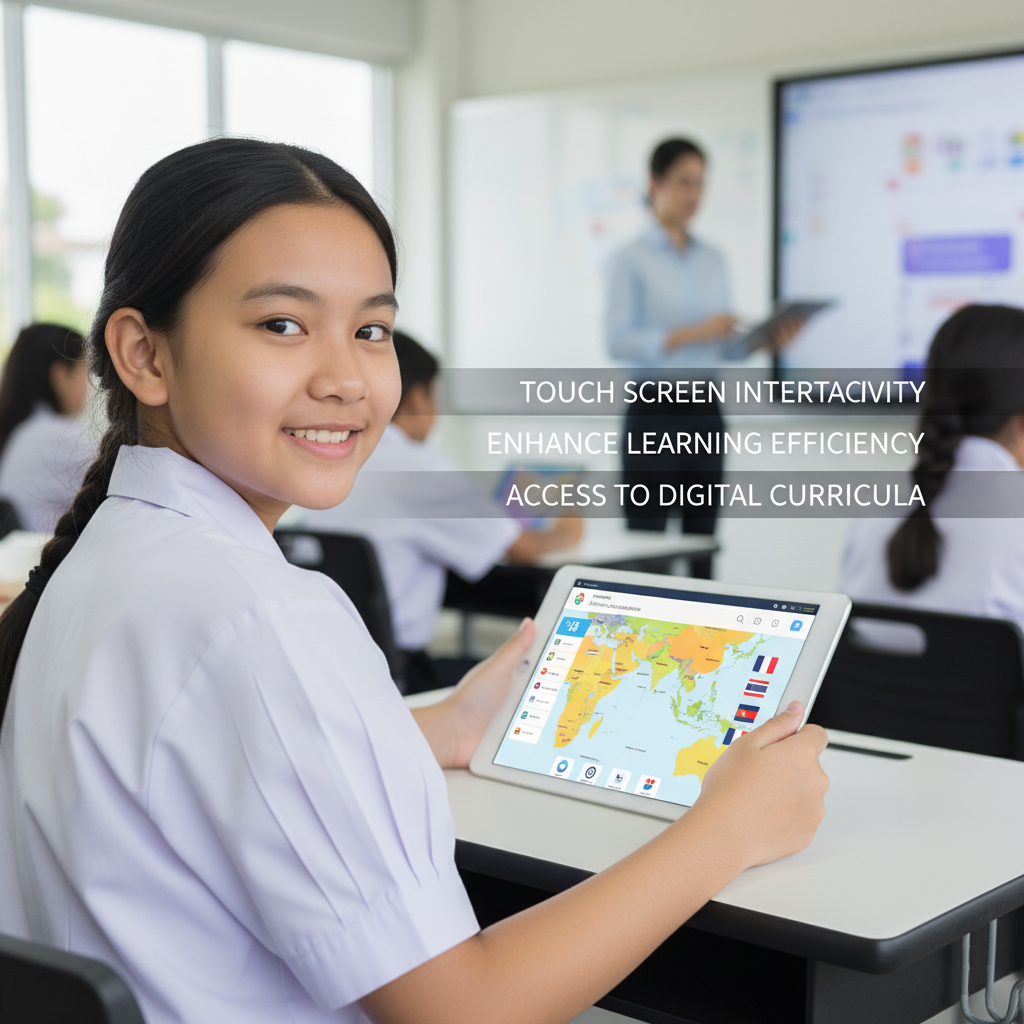
Section 2: Why Education Tablets Are in High Demand
Education tablets have emerged as the centerpiece of modern classrooms for several compelling reasons. Unlike traditional PCs or laptops, tablets offer a combination of portability, affordability, and flexibility that aligns perfectly with the needs of schools and students in developing markets.
1. Interactive Learning and Student Engagement
Tablets transform passive learning into interactive experiences. With touch-enabled interfaces, multimedia lessons, and access to cloud-based resources, students engage more actively in lessons, promoting creativity and participation.
2. Personalized and Adaptive Learning
Through learning apps and cloud-based platforms, tablets support customized educational experiences, allowing teachers to track progress, assign adaptive tasks, and provide instant feedback. This personalization helps address diverse learning needs in classrooms with varying skill levels.
3. Cost-Effective Deployment
Compared to desktops or laptops, tablets are significantly more cost-efficient to procure, deploy, and maintain. Their lower energy consumption and simplified configuration make them ideal for budget-sensitive education projects.
4. Mobility and Accessibility
Tablets enable seamless learning across classrooms, libraries, and even students’ homes. In regions where shared devices are common, their portability ensures that digital learning can continue beyond the school environment.
By combining these benefits, education tablets are not only enhancing classroom experiences but also bridging digital divides in developing education systems.
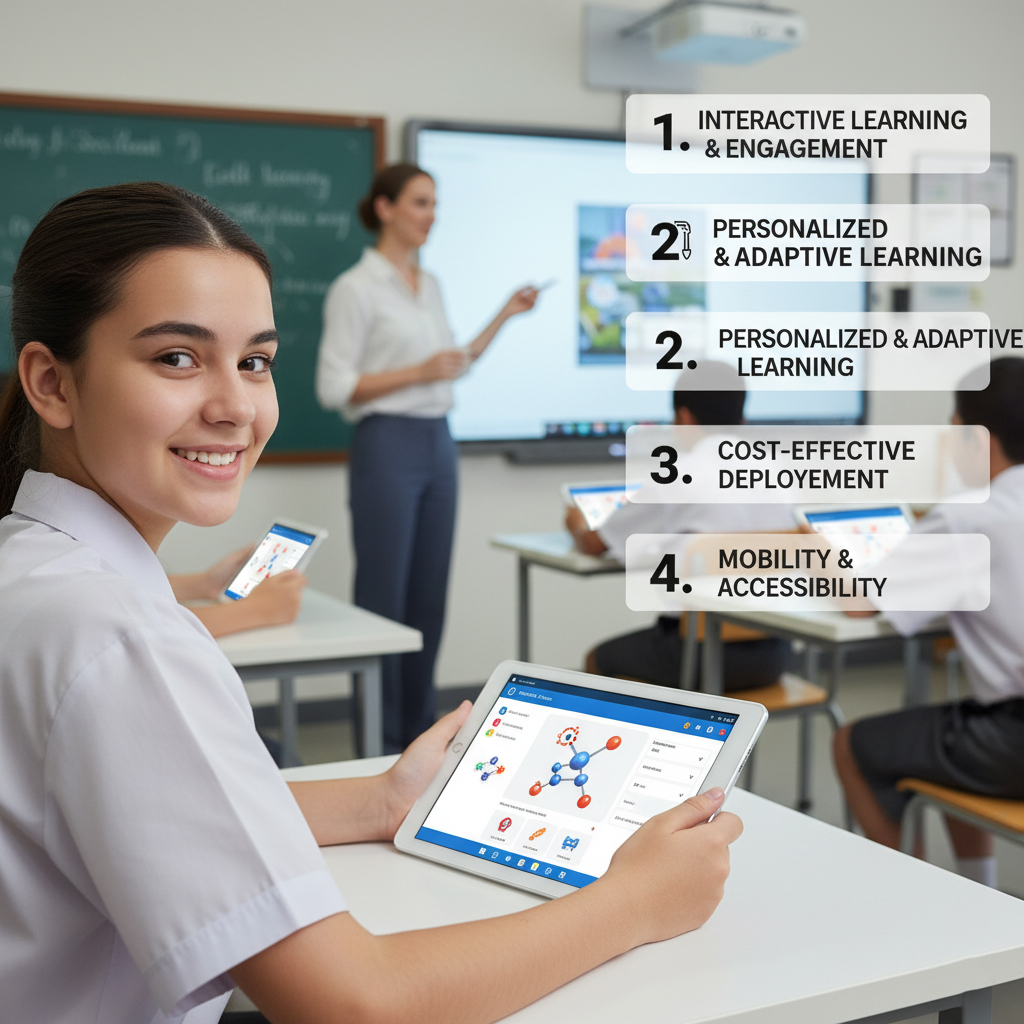
Section 3: Key Market Drivers
The surge in tablet adoption across Southeast Asian education systems can be attributed to several converging forces:
1. Government Digital Learning Initiatives
National education ministries across the region have made digital transformation a key policy focus. Projects such as Thailand’s Smart Classroom Program, Indonesia’s Distance Learning Plan, and Vietnam’s Digital Education Strategy emphasize technology-enabled learning to promote inclusivity and innovation. Many of these programs involve public-private partnerships to deliver affordable, scalable tablet-based solutions.
2. Growth of Cloud-Based Learning Platforms
The rising use of cloud platforms for content delivery and learning management is driving schools to adopt compatible hardware. Tablets running Android systems integrate easily with cloud environments, enabling real-time updates, performance monitoring, and collaborative learning.
3. NGO and Public-Private Collaborations
Non-governmental organizations and global education initiatives are working with local governments to distribute tablets in underserved regions. These partnerships aim to close the digital divide by providing access to learning resources even in remote communities.
4. OEM and System Integrator Opportunities
For manufacturers, distributors, and system integrators, Southeast Asia presents strong growth potential. Educational institutions seek customized, scalable tablet solutions that align with local needs—creating opportunities for OEM education tablet suppliers and technology providers to establish long-term partnerships.
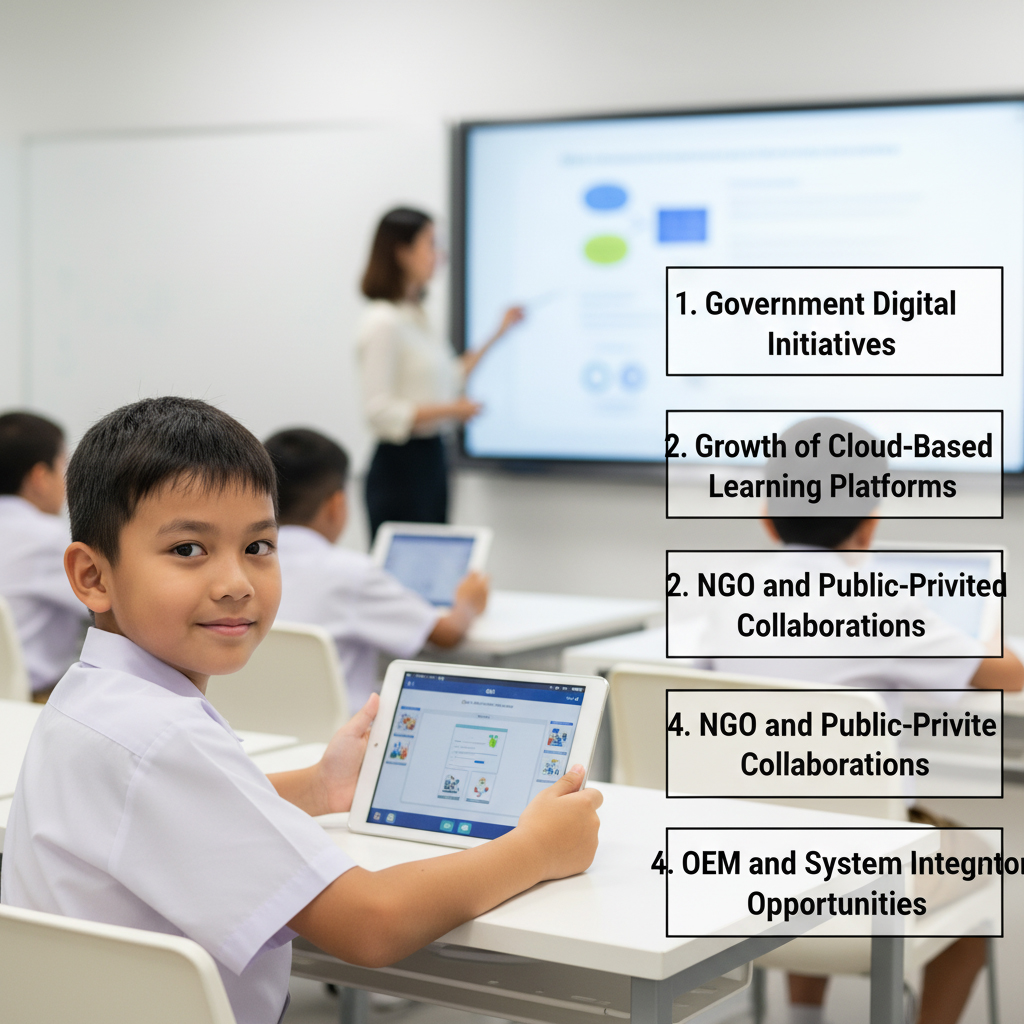
Section 4: Challenges and Localization Needs
Despite the rapid progress, several challenges continue to shape the adoption of education tablets in Southeast Asia. These challenges also highlight the need for hardware and software designed with local conditions in mind.
1. Uneven Network Infrastructure
While major cities enjoy stable connectivity, rural areas often face unreliable internet access. Education tablets that support offline learning modes and local content storage can help overcome this gap.
2. Language Diversity
The region’s linguistic diversity—spanning English, Bahasa Indonesia, Thai, Vietnamese, and Filipino—necessitates devices with multi-language user interfaces and adaptable operating systems.
3. Budget Sensitivity and Durability
Education projects in emerging markets are highly cost-sensitive. Devices must offer long life cycles, energy efficiency, and ruggedized designs to withstand frequent student use.
4. Data Security and Device Management
As schools expand their digital ecosystems, mobile device management (MDM) and data security become critical. Education tablets should include built-in access controls, monitoring tools, and parental management features to ensure safe, responsible device use.
Manufacturers that can deliver solutions addressing these localization and durability challenges will be well-positioned to capture growing demand across the region.
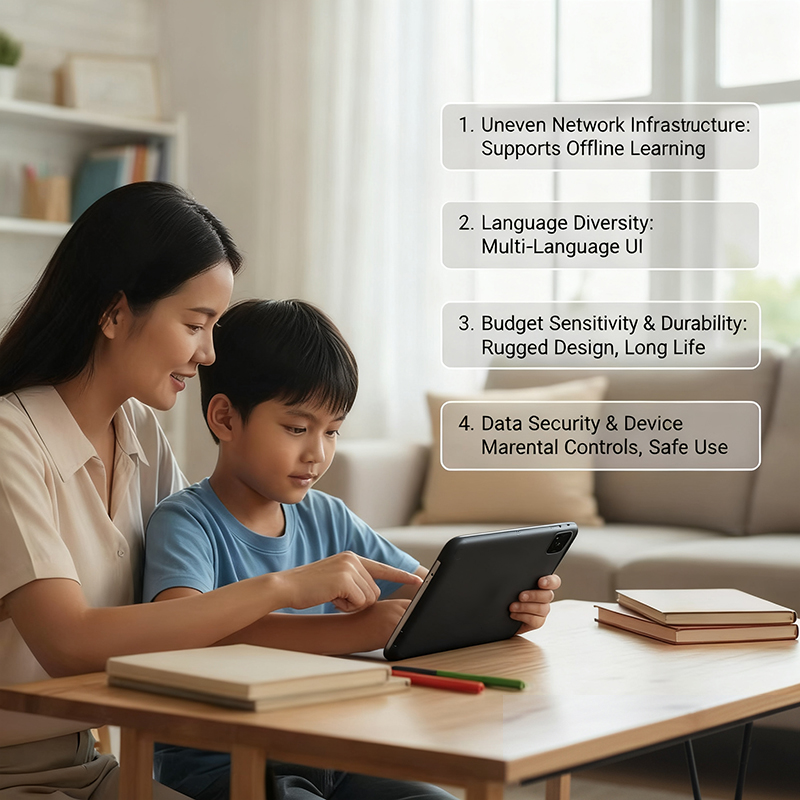
Section 5: Hopestar’s Role in the Smart Education Ecosystem
As digital learning gains traction across Southeast Asia, Hopestar has established itself as a reliable technology partner supporting the region’s education transformation. With extensive experience in Android-based education tablets and smart learning devices, Hopestar collaborates with system integrators, government programs, and educational organizations to deliver adaptable, high-performance solutions.
Hopestar’s Strengths in Education Technology
Comprehensive Product Portfolio: A wide range of education tablets from compact 8-inch models to rugged 14-inch learning terminals, built to suit various classroom environments.
OEM/ODM Expertise: Hopestar supports large-scale education projects with customized software, branding, and hardware configurations, ensuring local relevance and ease of deployment.
Optimized for Regional Needs: Hopestar’s devices feature multi-language UI support, energy-efficient chipsets, and reinforced casings suitable for tropical climates and high student usage.
Proven Deployments in Southeast Asia: Hopestar’s education tablets have been implemented in digital classroom initiatives across Indonesia, Thailand, and Vietnam, empowering teachers and students to engage in modern, interactive learning.
By combining global manufacturing expertise with a deep understanding of local education needs, Hopestar contributes to the growth of digital learning ecosystems throughout Southeast Asia.

Conclusion
The digital transformation of education in Southeast Asia represents one of the most dynamic market shifts in recent years. As governments, schools, and private organizations continue to invest in smart education, the demand for affordable, durable, and flexible education tablets will only accelerate. These devices have become the backbone of modern learning—bridging connectivity gaps, enhancing classroom interactivity, and enabling inclusive education for millions of students.
For technology partners and device manufacturers, the opportunities are vast. The evolution toward smart classrooms and digital campuses will depend heavily on reliable OEM collaborations and locally adapted solutions.
As Southeast Asia embraces smart education, Hopestar continues to empower local partners with reliable, customizable education tablet solutions designed for the next generation of learners—helping to build a smarter, more connected educational future for the region.

 86 13392660243
86 13392660243 hope17@cnhopestar.com
hope17@cnhopestar.com
 whatsapp
whatsapp
 Latin America Android All-in-One Terminal Market: Demand Insights and Procurement Trends
Latin America Android All-in-One Terminal Market: Demand Insights and Procurement Trends 












